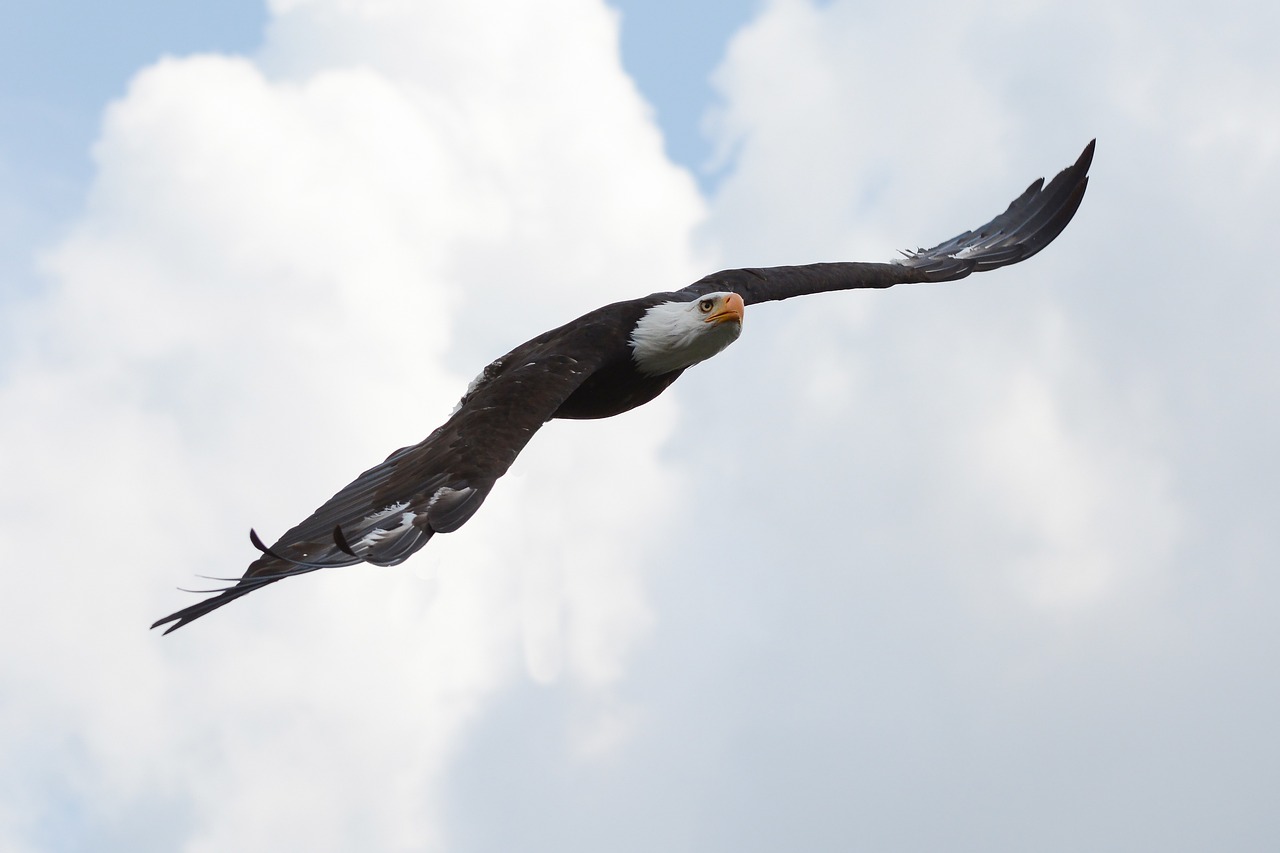EAGLE
BALD EAGLE
Class : Aves (Birds)
Scientific Name : Haliaeetus leucocephalus
FAMILY : Accipitridae
SPECIES : leuccocephalus
GENUS : Haliaeetus
ORDER : Falconiformes
About
Are bald eagles actually bald?
No. Their head is covered with short, white feathers. The term bald may be from the Old English word balde, which meant white. Bald eagles are sometimes called American eagles, fishing eagles, Washington eagles, and white-headed eagles. They belong to a scientific grouping of eagles known as sea-eagles or fish eagles.
Threats
Bald Eagles face numerous threats that endanger their populations. Habitat loss and degradation due to urban development, logging, and pollution are major concerns, reducing their natural living spaces and affecting their health. Climate change impacts further threaten their survival by disrupting breeding cycles and inundating coastal nesting sites. Poisoning from lead ingestion through spent ammunition and fishing tackle, as well as exposure to pesticides, poses significant risks to their health. Human disturbance from recreational activities near nesting sites can lead to nest abandonment, and illegal shooting and trapping continue to be problems despite legal protections. Additionally, collisions with power lines, wind turbines, and vehicles, as well as competition and predation from other wildlife, further threaten their populations.
Conservation Action
Whether you live in the city or the country, owls help us by controlling rodent and insect populations. But we often treat owls as enemies, and they fall victim to poison when fields are sprayed to kill weeds, insects, and rodents. We can help owls by finding other ways to control pests: for example, let owls and other predators do this job. They also need open spaces and trees if they are to survive. Each type of owl has different needs: some need forests, like the spotted owl, while the largest owl, the Eurasian eagle-owl, needs large territories and large prey.
Owls don’t have teeth, so they can’t chew their food; they rip their food apart and swallow the chunks or swallow their prey whole. They cough up or “cast” packets of bones and hair they are unable to digest. Dissecting these pellets (as many a biology student has done) reveals the owl’s diet.
Life Span
16.5 years on average
Young
Number of eggs laid : 1 to 3
Incubation period : 35 days
Age at fledge : 70 to 92 days
Age of maturity : 4 years
Size
Height : 28 to 38 inches (71 to 96 centimeters)
Wingspan : 5.5 to 8 feet (1.7 to 2.4 meters)
Weight : Females, 10 to 15 pounds (4.5 to 6.8 kilograms); males, 6 to 9 pounds (2.7 to 4 kilograms)
Fun Facts
When a bald eagle loses a feather on one wing, it will lose a matching one on the other. This way it doesn’t lose its balance.
The bald eagle deserves a “hand” for one of its characteristics: its grip strength is 10 times that of the average human.
Most eagles are silent, except during the breeding season. But bald eagles are famous for their harsh, cackling call, which the birds use throughout the year.
GALLERY




